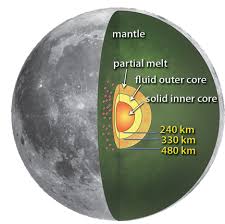
In an age of quickly advancing innovation and data over-burden, imaginative strategies of learning and community engagement are progressively profitable. One such approach picking up consideration combines ethereal motivation with human-centered plan: the concept of Moon and Circle-Based Data Centres. These centres are reimagining how individuals get to, share, and connected with knowledge.
The term “Moon” in this setting is typical. Fair as the Moon circles the Soil and reflects daylight, these centres point to reflect information and thoughts in ways that are open to everybody. Data is organized in stages, comparative to the Moon’s cycles, making a difference clients explore complex points in reasonable fragments. This approach empowers progressive learning, permitting people to retain data at their claim pace, much like watching the Moon’s waxing and waning.
Circle-based plan is another center component. Not at all like conventional straight formats, circular spaces cultivate inclusivity, exchange, and collaboration. Members sit or move in circles, making an environment where information streams unreservedly in all headings. This setup empowers peer-to-peer learning, gather talks, and intuitively workshops, breaking down progressive boundaries regularly show in ordinary learning spaces. The circular format too symbolizes solidarity and progression, emphasizing that learning is an progressing, shared involvement or maybe than a one-way transmission of facts.
These centres mix innovation with human interaction. Advanced assets, such as e-libraries and intelligently shows, are coordinates into the circular spaces, giving guests with get to to endless data systems. At the same time, facilitators direct talks, have workshops, and organize collaborative ventures, guaranteeing that learning remains individual, social, and meaningful.
Communities around the world have begun receiving these centres to address different needs. In urban zones, they serve as centers for skill-building and long lasting learning, whereas in provincial or underserved districts, they give get to to data that might something else be inaccessible. By combining the widespread image of the Moon with the comprehensive nature of circles, these centres make a sense of connection—both to information and to one another.
Ultimately, Moon and Circle-Based Data Centres speak to a move in how we see instruction and information sharing. They illustrate that learning is not fair around devouring data, but around engagement, reflection, and community. By drawing motivation from normal designs and human-centric plan, these centres are developing situations where interest flourishes and information is shared unreservedly.
Related:






1 thought on “The Moon and Circle-Based Information Centres”